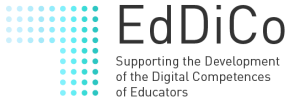Training material on digitalization of quality learning resources
Teachers and trainers have always dealt with content. Preparation for classes, writing activities and examples, preparing assignments and evaluation guidelines, developing curricula ect. Why do we deal with digitalisation? Is there any difference?
So what is digitalisation that we will cover in this training material? Digitalisation is so widely used that we first state we deal only with digitalisation in education and training. Definitions here are rather political and aim driven.
But it is not enough. Digitalisation in education and training is also quite a vague, if not fuzzy term. So in this material we will deal with digitalisation of learning resources, or in other words, learning content. The definitions are still vague.

